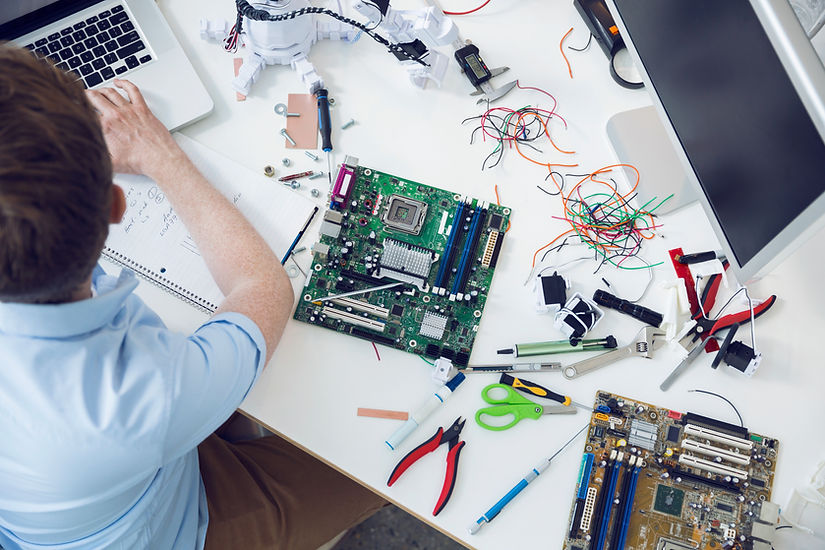
electronic design
Our electronics design utilizes the typical sensing, processing, and actuating model typical of mechatronics systems. A Myoware sensor is used to sense voltage differences from muscle flexion. These signals are routed to the processor, an Arduino Uno, which utilizes Digital Signal Processing to detect peaks to actuate the motors on the shooter. The motors (1 stepper, 2 brushless DC), are powered by ESCs and a stepper motor driver, which load and shoot the NERF projectiles automatically. A high-discharge Lithium polymer battery is used to maximize the speed of the brushless motors in order to raise the projectile shooting speed and range.

Circuitry Overview
For our design, the firing of the Nerf gun is triggered by muscle flexion. When muscles tighten, they create an action potential -an electromyography (EMG) signal- along the length of the muscle fibers. Our surface EMG sensor captures this as a voltage using 3 electrodes. Two electrodes detect the potential along the muscle fiber while the third electrode acts as a ground that cancels common signals between the first two electrodes.
The EMG Myoware muscle sensor is used to detect the user’s intentions of shooting the Nerf gun, the Arduino Pro Micro is used to process the real time communication through digital input pins and outputting through PWM control to the motor controllers, and the motor controllers use block commutation to actuate the brushless motors to 6000 rpm within a second.
The paddlewheel reloading mechanism is used to feed the spinning flywheels. The paddlewheel reloading is discretized with a stepper motor to shoot out balls at controlled rate, so balls are not accidentally launched, or shot at at an inconsistent frequency. The stepper motor can also be controlled to wait at a specified delay to wait until the flywheels get up to speed, which is within a second.